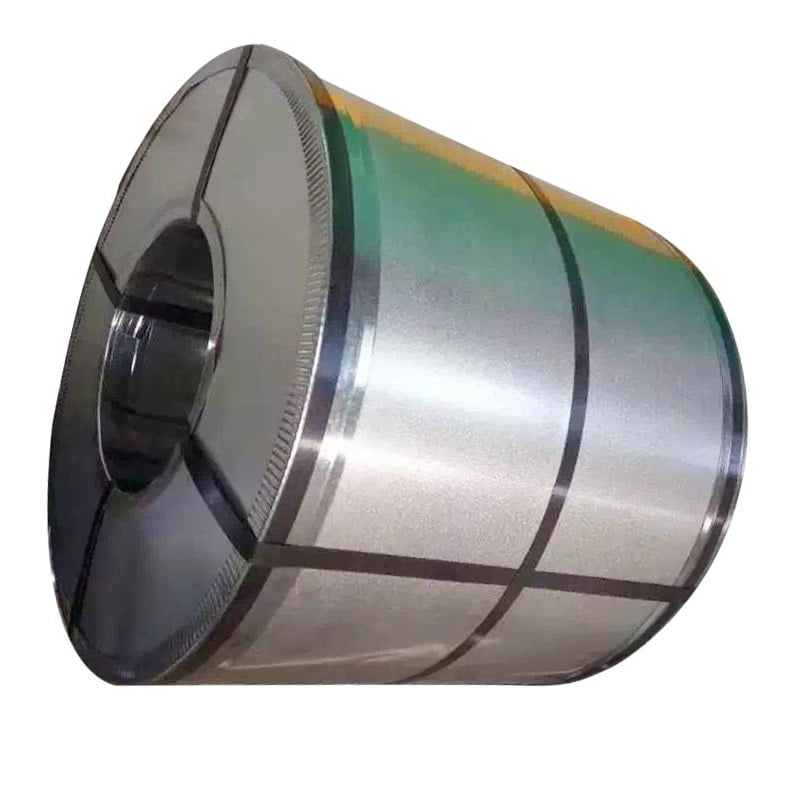
導入
亜鉛めっき鋼は、その効果的な腐食抵抗と耐久性のおかげで、さまざまな業界で重要な材料になりました。鋼の強度と亜鉛コーティングの保護品質を組み合わせて、寿命と回復力を必要とするアプリケーションに最適です。この記事では、亜鉛メッキ鋼のプロパティ、生産方法、アプリケーション、利点、短所、および将来の傾向を調査し、最新の建設と製造におけるその重要性を掘り下げます。
鋼鉄の理解
亜鉛メッキ鋼の詳細に飛び込む前に、鋼自体の特性を理解することが不可欠です。鋼は主に鉄と炭素で構成される合金で、炭素含有量は通常0.2%から2.1%の間です。炭素含有量の変動は、他の要素の追加とともに、それぞれが特定のアプリケーションに適したさまざまな種類とグレードの鋼につながります。
鋼の特性
スチールはそのために有名です:
- 強さ:かなりの負荷や機械的応力に耐えることができ、構造用途に最適です。
- 延性:鋼を破壊せずにさまざまな形に変形させることができ、設計と製造の柔軟性を可能にします。
- 溶接性:スチールは簡単に溶接することができ、複雑な構造とコンポーネントの作成を可能にします。
- 展性:圧力の下で鋼の能力を形作る能力は、その汎用性を増します。
- 導電率:鋼は優れた熱導電率と電気伝導率を備えており、さまざまなエンジニアリングアプリケーションに適しています。
多くの利点にもかかわらず、特に水分や過酷な環境条件にさらされた場合、鋼は腐食を起こしやすいです。この脆弱性は、亜鉛メッキ鋼が作用する場所です。
亜鉛メッキ鋼板とは何ですか?
亜鉛メッキ鋼 は、亜鉛の層でコーティングされた鋼です。亜鉛は、鋼と環境の間の障壁として機能し、水分と酸素が下にある金属に到達するのを防ぎます。この保護コーティングは、鉄鋼製品の寿命を大幅に増加させ、屋外および産業用アプリケーションに適しています。
亜鉛めっきプロセス
亜鉛めっきのプロセスには、いくつかの方法で鋼の表面に亜鉛の層を適用することが含まれます。亜鉛めっきの最も一般的な方法には次のものがあります。
- ホットディップの亜鉛メッキ:この方法では、摂氏450〜460度(華氏842〜860度)の範囲の温度で、鋼は溶融亜鉛のお風呂に浸されます。熱により亜鉛が鋼に結合し、厚くて耐久性のあるコーティングが形成されます。ホットディップガルバン化は、その堅牢な保護特性で知られており、大きな構造成分に広く使用されています。
- 電気ガルバニング:この方法には、電気めっきプロセスを介した亜鉛コーティングの適用が含まれます。このプロセスでは、鋼は亜鉛塩を含む溶液に浸され、電流が溶液に通過し、鉄面に亜鉛が堆積するようになります。電気ガルバン化を通じて生成される亜鉛コーティングは、ホットディップの亜鉛メッキによって得られたものよりも薄く、より均一になる傾向があります。
- 亜鉛スプレーコーティング:この方法では、スプレー技術を使用して鋼の表面に溶融亜鉛を適用することが含まれます。亜鉛スプレーコーティングは、多くの場合、修理およびメンテナンス用途に使用され、元の亜鉛メッキコーティングが摩耗した可能性のある保護層を提供します。
- ガルバニールコーティング:このプロセスでは、鋼は最初に亜鉛メッキされ、次に制御された大気で加熱され、亜鉛の一部が鉄面の鉄と反応することができます。これにより、優れた塗料の接着と耐食性を提供するコーティングが生じます。
亜鉛メッキ鋼の種類
さまざまな種類の亜鉛めっき鋼は、平方メートルあたりのグラム(g/m²)で測定される亜鉛コーティングの厚さによって特徴付けられます。一般的なタイプには以下が含まれます。
- G30:このグレードの亜鉛コーティングは約30 g/m²で、通常、水分への曝露が限られている屋内用途に使用されます。
- G60:約60 g/m²の亜鉛コーティングを使用すると、G60亜鉛メッキ鋼は中程度の屋外曝露に適しており、屋根張りパネルや羽目板に一般的に使用されます。
- G90:このグレードは、約90 g/m²のコーティングを特徴としており、フェンス、ポール、構造ビームなどのより厳しい環境やアプリケーションに適しています。
- 亜鉛 - アルミニウムコーティング:一部の亜鉛メッキされた鋼は、亜鉛とアルミニウムの混合物でコーティングされており、耐食性と熱反射率が向上します。
亜鉛メッキ鋼の特性
亜鉛メッキ鋼のユニークな特性は、さまざまなアプリケーションに魅力的な選択肢となります。重要なプロパティは次のとおりです。
耐食性
亜鉛メッキ鋼の主な利点は、その並外れた耐食性です。亜鉛コーティングは、水分や酸素への曝露を防ぎ、錆や腐食のリスクを大幅に減らします。コーティングが傷または損傷している場合でも、亜鉛は「カソード保護」として知られるプロセスを通じて露出した領域を保護し続けます。亜鉛は犠牲のアノードとして機能し、鋼に優先的に腐食し、基礎となる金属の寿命を延長します。
耐久性
亜鉛メッキ鋼は耐久性が高いため、屋内と屋外の両方のアプリケーションに適しています。雨、湿度、温度の変動など、厳しい環境条件に耐えることができます。鋼の強度と亜鉛の保護品質の組み合わせは、長期にわたる材料になります。
費用対効果
亜鉛メッキ鋼の初期コストは、コーティングされていない鋼のコストよりも高い場合がありますが、その長期的な費用対効果は否定できません。拡張された寿命と亜鉛メッキ鋼に関連するメンテナンス要件の削減は、産業や企業にとって賢明な投資となります。
美的魅力
亜鉛メッキ鋼は、光沢のある金属製の仕上げを特徴とする独特の外観を持っています。この審美的な魅力は、構造または製品の全体的な外観を高めることができ、アーキテクチャと設計のアプリケーションに適しています。
環境にやさしい
亜鉛メッキ鋼はリサイクル可能であり、その生産プロセスは最小限の廃棄物を生成します。保護コーティングとして亜鉛を使用することは、亜鉛メッキ鋼製品を再利用および再利用できることを意味し、より持続可能な環境に貢献します。
亜鉛メッキ鋼のアプリケーション
亜鉛めった鋼は、その好ましい特性により、さまざまな業界で広く使用されています。いくつかの一般的なアプリケーションには次のものが含まれます。
工事
亜鉛メッキ鋼は、次のアプリケーションで建設業界で一般的です。
- 構造コンポーネント:亜鉛めっき鋼から作られたビーム、柱、およびフレームは、その強度と耐食性のために建物の構造に使用されます。
- 屋根とサイディング:亜鉛めったシートは、一般的に屋根のパネルやサイディング材料に使用され、水分と気象要素に対する保護障壁を提供します。
- フェンシングとゲート:亜鉛メッキ鋼で作られたフェンス、ゲート、手すりは耐久性があり、錆に耐性があり、屋外での使用に適しています。
自動車産業
Galvanized Steelは、自動車部門に重要な用途を持っています。
- シャーシとボディパネル:亜鉛メッキ鋼は、車両のシャーシとボディパネルの生産に使用され、錆や腐食に対する保護を提供します。これは、道路塩や水分にさらされるために発生する可能性があります。
- 排気システム:排気システムの一部のコンポーネントは、高温抵抗と腐食保護を提供するため、亜鉛メッキ鋼で作られています。
アプライアンスの製造
亜鉛メッキ鋼は、一般的に家電製品の製造に使用されます。
- 冷蔵庫とワッシャー:亜鉛メッキ鋼の保護品質により、冷蔵庫と洗濯機のケーシングに最適な選択肢となり、寿命と信頼性が確保されます。
- 調理器具:ストーブとオーブンは、耐久性と熱と湿気に対する耐性のために亜鉛メッキ鋼を利用することがよくあります。
農業機器
農業部門では、亜鉛メッキ鋼が以下に使用されます。
- フェンシングとゲート:亜鉛メッキ鋼で作られた家畜のフェンシングとゲートは、錆や摩耗に耐性があり、長いサービス寿命を確保します。
- ストレージタンク:亜鉛メッキ鋼タンクは、腐食に対する耐性のため、水、飼料、化学物質の保管に最適です。
電気産業
亜鉛メッキ鋼は、電気アプリケーションでも利用されています。
- コンジットとケーブルトレイ:亜鉛メッキ鋼の導管とケーブルトレイは、電気配線を保護し、安全性と寿命を確保します。
- 照明器具:多くの屋外照明器具は、過酷な気象条件で耐久性を高めるために亜鉛メッキ鋼を使用しています。
亜鉛メッキ鋼の利点
亜鉛メッキ鋼の使用には、多くの利点があります。
1。長寿命
亜鉛めった鋼は、環境条件と亜鉛コーティングの厚さに応じて、しばしば最大50年以上続くサービス寿命を延ばします。この長寿は、頻繁な交換とメンテナンスの必要性を減らし、時間の経過とともにコスト削減につながります。
2。メンテナンスが少ない
亜鉛メッキ鋼の耐食性は、コーティングされていない鋼と比較して最小限のメンテナンスを必要とすることを意味します。定期的な検査で十分であり、一般的には繰り返しまたは再コーティングは不要であり、メンテナンスコストをさらに削減します。
3。汎用性
亜鉛メッキ鋼は、さまざまな業界の幅広いアプリケーションで使用でき、多目的な材料の選択肢になります。
4。安全性の強化
亜鉛メッキ鋼は、腐食による構造的障害のリスクを最小限に抑え、建物、車両、および機器の安全性と完全性を確保します。
5。環境上の利点
リサイクル可能であり、寿命が長く、亜鉛メッキ鋼は建設と製造における持続可能な慣行に貢献します。生産プロセスでリサイクル材料を使用すると、鉄鋼製造に関連する二酸化炭素排出量が減少します。
亜鉛メッキ鋼の短所
その多くの利点にもかかわらず、亜鉛メッキ鋼にはいくつかの欠点があります。
1。初期コスト
亜鉛メッキ鋼の前払いコストは、多くの場合、コーティングされていない鋼のコストよりも高くなります。ただし、メンテナンスの削減とサービス寿命の延長による長期コスト削減は、通常、この初期費用を正当化します。
2。限られた高温アプリケーション
亜鉛めっき鋼の亜鉛コーティングは、高温で劣化し始める可能性があり、極端な熱を経験する環境での使用を制限します。
3。溶接の難しさ
溶接亜鉛メッキ鋼は、亜鉛コーティングの存在により課題を引き起こす可能性があります。溶接中に適切な予防措置を講じなければなりません。亜鉛蒸気を防ぐ必要があります。これは、吸入時に有害である可能性があります。
4。審美的な制限
亜鉛めった鋼はユニークな外観を持っていますが、一部のアプリケーションでは、審美的な目的で特定の仕上げまたはコーティングが必要になる場合があります。望ましい外観を達成するには、追加の治療が必要になる場合があります。
亜鉛メッキ鋼の将来の傾向
産業が進化し、持続可能性がより重要になるにつれて、亜鉛メッキ鋼の使用にいくつかの傾向が生まれています。
1。持続可能な材料に対する需要の増加
環境に優しい建築材料の需要は増加しています。亜鉛メッキスチールのリサイクル性と長寿命の位置は、持続可能な建設慣行のコンテキスト内で好意的に位置付けられています。
2。コーティング技術の進歩
改善された電気ガルバニングや亜鉛 - アルミニウムコーティングなどの亜鉛めっき技術の革新により、さまざまな用途での亜鉛メッキ鋼の性能と耐久性が向上します。
3。スマートスチールアプリケーション
テクノロジーの鋼製品への統合は、牽引力を獲得しています。スマートな建設と製造がより一般的になるにつれて、亜鉛メッキ鋼は、構造的な完全性と環境条件を監視するためのセンサーとスマートな機能を組み込む可能性があります。
4。アプリケーションの拡大
産業は腐食防止のための革新的なソリューションを求めているため、亜鉛メッキ鋼の応用はさらに拡大すると予想されます。特に再生可能エネルギー、輸送、スマートインフラストラクチャでは、新しい市場が発生する可能性があります。
結論
亜鉛めった鋼は、鋼の強度と亜鉛の保護品質を組み合わせた驚くべき材料です。例外的な腐食抵抗、耐久性、低メンテナンスなど、そのユニークな特性により、建設から自動車製造まで、さまざまな業界で人気のある選択肢となっています。いくつかの欠点がありますが、それらの影響は、亜鉛メッキ鋼を使用することの長期的な利点によってしばしば軽減されます。
産業は引き続き持続可能で革新的なソリューションを求めているため、亜鉛メッキ鋼は、現代の建設と製造において重要な要素であり続ける可能性が高く、製品と構造の効率と寿命に貢献しています。コーティング技術の継続的な進歩と、環境にやさしいことに焦点が合っているため、亜鉛メッキ鋼は、材料工学の将来においてさらに重要な役割を果たす態勢が整っています。
